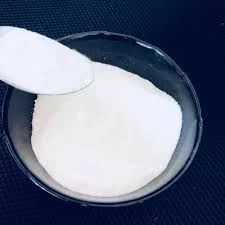
Nov . 25, 2024 15:38 Back to list
hydroxypropyl methyl cellulose hs code
Understanding Hydroxypropyl Methyl Cellulose HS Code and Its Significance
Hydroxypropyl methyl cellulose (HPMC) is a versatile, non-ionic cellulose ether widely used in various industries, including pharmaceuticals, food, cosmetics, and construction. This article explores the significance of HPMC, its applications, and its Harmonized System (HS) code, which plays a crucial role in international trade.
What is Hydroxypropyl Methyl Cellulose?
HPMC is a water-soluble polymer derived from natural cellulose, modified through etherification processes that introduce hydroxypropyl and methyl groups. This modification enhances its properties, making it an effective thickener, binder, and film-forming agent. HPMC appears as a white powder that dissolves in both hot and cold water, forming a gel-like substance that is stable across a range of pH levels.
Applications of HPMC
1. Pharmaceuticals HPMC is extensively used in the pharmaceutical industry, primarily as a binding agent in tablet formulations. Due to its ability to control the release of active ingredients, it is also utilized in controlled or sustained-release medications. Furthermore, HPMC serves as a stabilizing agent in suspensions and emulsions.
2. Food Industry HPMC functions as a food additive, improving texture, viscosity, and moisture retention in various food products. It is commonly found in sauces, dressings, and dairy products, where it enhances mouthfeel and prevents separation.
3. Cosmetics and Personal Care In personal care products, HPMC acts as a thickening agent in lotions, creams, and gels. It provides a smooth, velvety texture while stabilizing emulsions.
4. Construction HPMC is used in the construction industry as an additive in mortars and tile adhesives. It improves workability, adhesion, and water retention, resulting in durable and high-performing materials.
5. Agriculture HPMC is finding applications in agriculture as well, particularly as a soil conditioner and controlled-release agent for fertilizers.
The HS Code for HPMC
hydroxypropyl methyl cellulose hs code

The Harmonized System (HS) code is an internationally standardized system for classifying traded products. It is crucial for customs duties, trade statistics, and regulation. Hydroxypropyl methyl cellulose falls under a specific HS code, which is essential for import and export purposes.
For HPMC, the relevant HS code is typically classified under “3912.31” in most regions, indicating it as a polymer of acrylic or methyl. It is vital for manufacturers and importers to use the correct HS code to ensure compliance with trade regulations and facilitate smoother customs procedures.
Importance of HS Codes in Trade
Understanding and correctly using HS codes like that of HPMC is essential for several reasons
1. Trade Regulation Compliance Accurate classification ensures compliance with international trade regulations and prevents potential legal issues.
2. Customs Duties Different products attract varying customs duties. Correct HS coding can lead to cost savings for businesses while avoiding penalties for misclassification.
3. Market Analysis HS codes are used to gather data on trade flows, enabling companies to analyze market trends, identify opportunities, and make informed business decisions.
4. Global Supply Chain Management Proper documentation with the correct HS codes streamlines supply chain operations, facilitating timely delivery and inventory management.
Conclusion
Hydroxypropyl methyl cellulose is a widely utilized compound across multiple sectors due to its beneficial properties. Understanding its applications and the significance of its HS code is crucial for businesses engaged in international trade. By utilizing the correct classification, companies can navigate global markets more effectively, ensuring compliance and optimizing their import/export processes.
-
Versatile Hpmc Uses in Different Industries
NewsJun.19,2025
-
Redispersible Powder's Role in Enhancing Durability of Construction Products
NewsJun.19,2025
-
Hydroxyethyl Cellulose Applications Driving Green Industrial Processes
NewsJun.19,2025
-
Exploring Different Redispersible Polymer Powder
NewsJun.19,2025
-
Choosing the Right Mortar Bonding Agent
NewsJun.19,2025
-
Applications and Significance of China Hpmc in Modern Industries
NewsJun.19,2025







